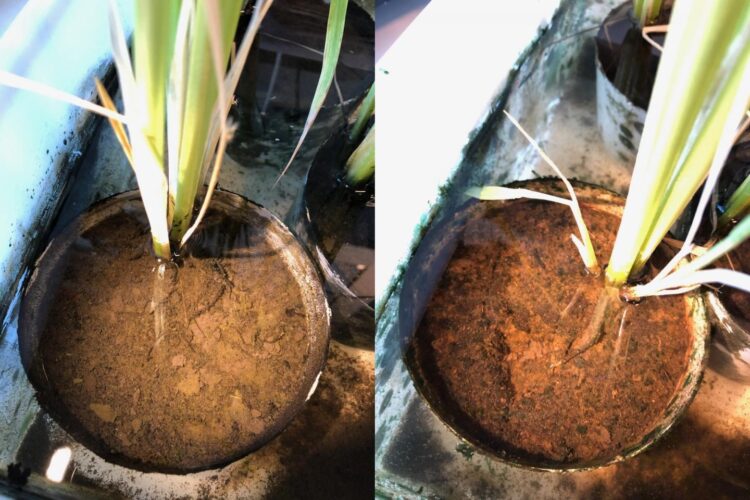A Danish-German research collaboration may have found a solution to the large climate impact from the world’s rice production: By adding electric conductivel cable bacteria to soil with rice plants, they could reduce methane emissions by more than 90%

Credit: Vincent Valentin Scholz, AU
A Danish-German research collaboration may have found a solution to the large climate impact from the world’s rice production: By adding electric conductive cable bacteria to soil with rice plants, they could reduce methane emissions by more than 90%.
Half of world´s population is nourished by rice crops, but rice cultivation is harsh to he climate. The rice fields account for five percent of global emissions of the greenhouse gas methane, which is 25 times stronger than CO2.
This is because the rice plants grow in water. When the fields are flooded, the soil becomes poor in oxygen, creating the right conditions for microorganisms to produce methane.
Now researchers from Aarhus University and the University of Duisburg-Essen have found that cable bacteria could be an important part of the solution. In the laboratory, they have grown rice in soil with and without cable bacteria and measured what happened.
“And the difference was far beyond my expectations. The pots with cable bacteria emitted 93% less methane than the pots without cable bacteria, “says Vincent Valentin Scholz, who conducted the experiments as a PhD student at the Center for Electromicrobiology (CEM) at Aarhus University.
The result is published today in the scientific journal Nature Communications.
Increases sulfate and attenuates microbes
“Cable bacteria transport electrons over centimeter distances along their filaments, changing the geochemical conditions of the water-saturated soil. The cable bacteria recycle the soil’s sulfur compounds, thus maintaining a large amount of sulfate in the soil. This has the consequence that the methane-producing microbes cannot maintain their activity”, explains Vincent Valentin Scholz.
It is already known that the rice growers can temporarily slow down the emission of methane by spreading sulfate on the rice fields. Apparently, the cable bacteria can do this for them – and not just temporarily.
This finding adds a new angle to the role of cable bacteria as ecosystem engineers. While the authors emphasize that they have only the very first laboratory observation, it is tempting to speculate that enrichment of cable bacteria by sensible management of water and soil regime could become a sustainable and convenient solution for reducing methane emissions from rice fields. But of course, it requires field studies to see how cable bacteria can thrive in rice fields.
###
About cable bacteria:
Cable bacteria were an unknown way of life until they were first identified in the Bay of Aarhus, Denmark, in 2012. They thrive on the bottom of the sea, lakes, groundwater and streams and often in large quantities.
Each individual consists of thousands of cells in a centimeter-long chain surrounded by a common outer sheath with electric wires. One end is buried in the oxygen-poor sediment, the other is so close to the water that it has contact with oxygen. This allows the bacteria to use electric power to burn the food in an oxygen-free environment. The process also changes the chemical composition of the soil.
Media Contact
Vincent Valentin Scholz
[email protected]
Original Source
https:/
Related Journal Article
http://dx.





